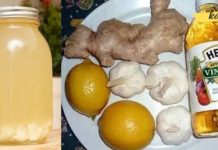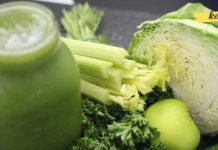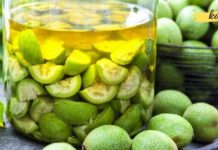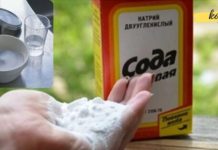Are You Really Eating Real Butter? Here’s How to Find Out
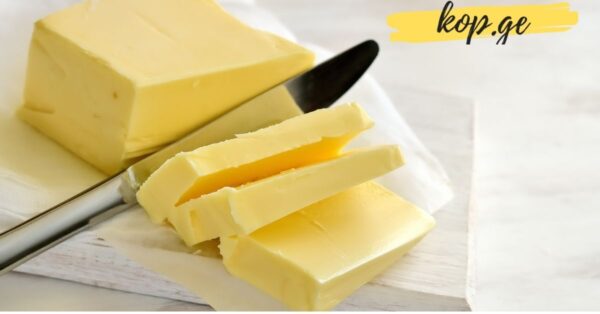
The variety of dairy products available today in supermarkets and local markets is enormous. On the one hand, this abundance gives us the opportunity to diversify our diet with new tastes and textures. On the other hand, it also creates room for dishonest manufacturers who try to pass off lower-quality products—such as margarine or butter blends—as “real butter.”
Food experts warn that a large percentage of butter sold on the market may be adulterated or counterfeit. This means that what many consumers believe to be natural butter might, in fact, contain vegetable oils, fillers, or preservatives that diminish its nutritional value. That’s why it is increasingly important to know how to distinguish high-quality, natural butter from substitutes.
Real butter is not only delicious and aromatic—it is also a valuable source of essential nutrients. It provides fat-soluble vitamins (A, D, E, K), minerals, and trace elements that support the body in multiple ways. Genuine butter contributes to:
Brain function – providing healthy fats necessary for nerve and brain cell communication.
Skin health – acting as a natural moisturizer and nutrient source.
Vascular strength – helping maintain flexible and resilient blood vessels.
Joint protection – reducing the risk of arthritis and supporting bone health.
Immune function – strengthening the body’s natural defenses.
But how can you, as a consumer, know whether the butter you buy is authentic or just a cleverly marketed imitation? Let’s break down the signs that help reveal the truth.
1. Check the Ingredients First
The very first thing to look at when choosing a product is the ingredient list. Natural butter should have a short and simple composition: usually just whole milk and cream.
If the label lists vegetable oils, hydrogenated fats, emulsifiers, or additives, what you are buying is not true butter—it’s margarine or a butter blend. Margarine often contains palm oil, soybean oil, or sunflower oil, which change both the taste and nutritional profile.
Tip: if the ingredient list seems too long or complicated, it’s probably not real butter.
2. Look for the Word “Butter” on the Label
This may sound obvious, but it is worth checking. If the packaging does not clearly state “butter,” you should be cautious. Manufacturers sometimes use terms like “spread,” “vegetable butter,” or “milk fat product.” These are signs that the product is not pure butter but rather a mixture of fats.
In most countries, labeling regulations require that only 100% dairy-based products can legally be called butter. If the package avoids the word, there’s usually a reason.
3. Observe the Color
If you have the opportunity to see the butter directly (for example, at a market where it is sold by weight), pay attention to the color. Genuine butter typically has a pale yellow to creamy shade.
It should not be intensely white (which suggests excessive processing) nor unnaturally bright yellow (which may indicate artificial coloring). Natural variations in shade are normal and often depend on the cow’s diet—for instance, butter made from the milk of grass-fed cows tends to have a richer golden hue.
4. Check the Shelf Life
Storage time is another important clue. True cow’s butter sold by weight usually has a shelf life of about 10 days under proper refrigeration. When packed in metal tins or sealed packaging, it can last up to three months.
If you see butter with an unusually long shelf life—six months, a year, or even more—it’s almost certain that preservatives have been added. While that might extend storage convenience, it’s a clear sign that the product is not purely natural.
5. Test It in a Pan
One of the simplest home tests involves melting butter in a frying pan. Place a small piece in the pan and watch what happens:
Real butter melts evenly, turning into a uniform golden liquid.
Margarine or butter substitutes separate into drops or pools of oil, often leaving water or foam behind.
This difference occurs because margarine contains vegetable oils and water emulsions that behave differently under heat.
6. Observe Behavior in Cold Temperatures
Another easy test involves refrigeration. Real butter remains firm and solid when kept cold, while margarine, because of its higher vegetable oil content, softens and spreads easily even at low temperatures.
So, if your “butter” spreads effortlessly straight from the refrigerator, it may not be pure butter at all.
7. Pay Attention to Texture
Finally, natural butter has a consistent, smooth texture. When you take it out of the fridge and try to cut it, it should slice cleanly without crumbling.
Counterfeit or low-quality butter, by contrast, may break apart or crumble because of the stabilizers and different fats it contains.
Why Choosing Real Butter Matters
Some people wonder: does it really matter if I eat margarine instead of butter? The answer is yes, especially if you care about both health and taste.
Nutritional Value: Real butter provides fat-soluble vitamins (especially vitamin A, essential for vision and immunity). Margarine, unless fortified, does not.
Natural Fats vs. Processed Fats: Butter contains natural saturated fats, while margarine is made from refined vegetable oils that may undergo hydrogenation—a process that can produce unhealthy trans fats.
Taste and Culinary Use: Butter enhances flavor in cooking and baking in ways margarine cannot replicate. Its natural richness adds depth to pastries, sauces, and spreads.
Of course, moderation is key. Butter is calorie-dense, and excessive consumption can contribute to weight gain. But in reasonable amounts, high-quality natural butter is not only safe but beneficial.
Final Thoughts
With so many options on the shelves, choosing the right butter can be tricky. Yet, by paying attention to ingredients, labeling, color, shelf life, and texture, you can protect yourself from misleading products and ensure you’re enjoying genuine, high-quality butter.
At the end of the day, butter is more than just a kitchen staple—it’s part of cultural traditions, family recipes, and everyday meals. Making sure you’re eating the real thing helps you get the nutritional benefits while enjoying the authentic taste.
So the next time you shop, take a closer look. Real butter is simple, natural, and honest. And once you know the signs, you’ll never be fooled by imitations again.





